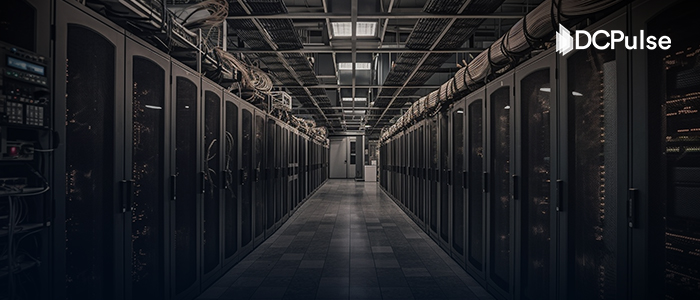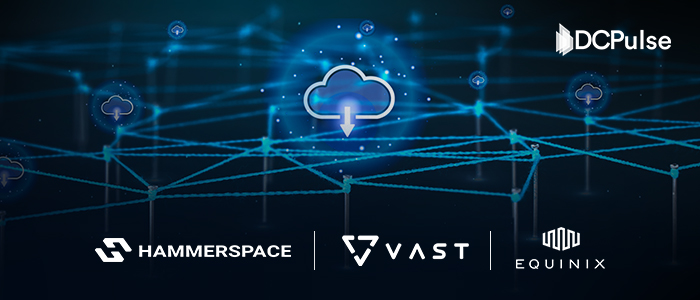In today’s digital era, data centers are the beating heart of everything from global communication to advanced AI. But as demand grows and high-performance workloads push power densities ever higher, a silent, formidable challenge intensifies: heat. Controlling this thermal load isn’t just about system stability; it’s central to energy efficiency, sustainability, and staying competitive.
At the center of this equation is Power Usage Effectiveness (PUE), the industry’s standard for measuring energy efficiency. A perfect score of 1.0 means every watt goes directly to computing. But with cooling and other overheads in play, that ideal remains elusive.
As defined in the Supermicro glossary, an official resource by Super Micro Computer, Inc., “A lower PUE signifies that a larger portion of a facility's energy consumption is dedicated directly to computing, indicating greater efficiency.”
That pursuit of lower PUE is reshaping how data centers are built and run.
The Foundation: Traditional Air-Cooling & Its Evolution
For decades, traditional air-cooling formed the backbone of data center thermal management, prized for its simplicity. Using Computer Room Air Conditioners (CRACs) or Computer Room Air Handlers (CRAHs), these systems pushed chilled air, often through raised-floor plenums, to cool IT equipment, then pulled warm exhaust back for recirculation.
But as IT power densities surged, air’s low thermal capacity became a liability. Massive airflows were required, driving up fan energy and creating inefficiencies. The result was uneven cooling, frequent hot spots, and undesirable mixing of hot and cold air. Legacy air-cooled facilities, particularly those with minimal optimization, often operate with PUEs between 2.0 and 2.5, a clear indicator of energy wasted on cooling overhead.
To counteract these inefficiencies, air-cooling underwent critical refinements. One of the most impactful was Hot/Cold Aisle Containment, which physically separated exhaust from intake streams. This eliminated thermal mixing and ensured that CRACs and CRAHs received warmer return air, boosting their cooling efficiency.
As Massed Compute noted, containment “directly improves PUE by optimizing cooling efficiency,” often reducing PUE by 0.1 to 0.2.
The introduction of economizers marked another leap forward. By harnessing ambient air or water in favourable climates, these systems delivered “free cooling,” allowing facilities to bypass power-hungry chillers entirely. Flexential, a U.S.-based hybrid IT and data center provider, identified this as a core strategy in achieving best-in-class efficiency, with air-cooled PUEs dropping to between 1.2 and 1.4 under optimal conditions.
Additional upgrades followed: Variable Speed Drives (VSDs) allowed fans and pumps to adjust their speeds with precision, conserving energy across load fluctuations. Higher IT inlet temperature thresholds, such as Intel IT’s reported tolerance of 95°F (35°C), further reduced the burden on cooling systems, aligning thermal strategy with modern server resilience.
Collectively, these advancements reshaped the limits of air-based cooling. But as rack power densities continued their steep climb, even the most optimized air systems began to strain, paving the way for immersion and other liquid cooling alternatives.
The Liquid Revolution: Precision Cooling for High-Density
As rack power densities surged beyond air’s practical limits, the shift to liquid was not optional; it was inevitable. Unlike air, liquids offer far higher thermal transfer capacity, enabling precise, efficient heat removal directly at the source.
Direct-to-chip liquid cooling (DLC) delivers coolant through cold plates mounted on CPUs, GPUs, and other high-wattage components. This minimizes thermal resistance and significantly reduces fan use. Facilities implementing DLC often report PUEs below 1.2, with certain optimized deployments achieving 1.1 or better.
Intel, Meta, and Microsoft have all integrated DLC into AI and HPC clusters where rack densities exceed 50 kW.
For brownfield sites, rear door heat exchangers (RDHx) serve as a practical retrofit, coupling liquid heat rejection with existing air-based setups. By extracting heat at the rack level, RDHx avoids hot aisle recirculation and supports higher densities, often up to 30–50 kW, without full infrastructure overhauls.
Immersion cooling takes liquid integration to its logical conclusion. Servers are submerged in non-conductive dielectric fluid that directly absorbs and transports heat. Single-phase systems use fluid circulation; two-phase systems exploit the latent heat of vaporization, with fluid boiling off and recondensing on integrated coils. This approach removes the need for server fans entirely, reduces pumping power, and simplifies airflow design, cutting energy losses at the source.
Well-designed immersion systems have demonstrated PUEs as low as 1.03, particularly in modular, high-density deployments. One prominent operator reported 10-15% lower cooling costs compared to DLC, and 40-50% savings over advanced air.
In edge and containerized deployments, immersion’s thermal stability and form factor flexibility have made it a default choice.
Together, these liquid methods are no longer niche solutions, they are rapidly becoming the new baseline, as air systems struggle to match both the efficiency and density demands of next-gen computing.
Harnessing Nature: Evaporative & Free Cooling Systems
While air and liquid cooling manage heat within the data hall, broader strategies are increasingly turning to the environment itself. Free cooling, particularly through evaporative and air-side economizer systems, allows data centers to minimize mechanical loads by exploiting favourable ambient conditions, a proven route to lower PUEs.
Air-side economizers draw filtered outdoor air directly into the facility when external temperature and humidity align with ASHRAE A1 recommendations, displacing hot internal air and reducing dependence on chillers.
The U.S. Department of Energy highlights such approaches as pivotal in cutting annual cooling energy consumption. In ideal climates, this can enable PUEs of 1.2 or better, particularly when paired with hot/cold aisle containment.
Evaporative cooling, or adiabatic cooling, uses water’s latent heat of evaporation to lower air temperatures. In direct systems, humidified air enters the data space, making it ideal for arid regions.
Indirect systems cool a secondary loop that transfers heat via exchangers, keeping added moisture out of the IT environment, a more versatile setup across climates.
Both methods rely less on compressors and more on low-power components like fans and pumps, offering typical PUEs between 1.1 and 1.3.
The real advantage, however, emerges when these systems operate in tandem with smart infrastructure. Building Management Systems (BMS) that dynamically toggle between free and mechanical cooling, based on real-time conditions, can maintain optimal efficiency year-round, extracting maximum thermal benefit from the natural environment.
The Best of Both Worlds: Hybrid Cooling Systems
As data centers scale in density and complexity, no single cooling method can meet all demands efficiently. Hybrid systems emerge as a strategic solution, blending multiple technologies to maximize performance, lower energy use, and adapt to variable IT loads and environmental conditions. These configurations shift cooling from a static function to a dynamic optimization tool, tuned for both PUE and resilience.
At the core of hybrid cooling is adaptability. A common pairing involves air-side economizers and liquid cooling loops. When conditions allow, economizers utilize outside air to displace mechanical loads, slashing energy consumption and sustaining low PUEs.
During hotter periods or load spikes, liquid cooling, via direct-to-chip or rear-door heat exchangers, activates to manage high-density hotspots, without burdening the full cooling infrastructure.
Another hybrid approach couples evaporative cooling with direct expansion (DX) or chiller systems. Under favourable weather, evaporative methods dominate, offering low-energy cooling. When temperatures or humidity rise, mechanical systems seamlessly supplement or take over, ensuring thermal continuity.
As Stulz notes, “Hybrid cooling is designed to ensure the most efficient, cost-effective, and ecologically sound solution for cooling data centers. With hybrid solutions, it is possible to achieve optimum efficiency and therefore a reduction of operational costs.”
The PUE performance of hybrid configurations is among the most compelling. By intelligently shifting between methods, facilities often achieve sustained PUEs in the 1.1 to 1.3 range, or lower, depending on design and location.
Beyond energy savings, hybrid cooling architectures enable a resilient, responsive thermal environment, capable of adapting to real-time fluctuations in load, weather, and operational priority.
These systems are not simply energy-efficient; they are intelligent, modular infrastructures built to meet the demands of modern computation with fluidity and control.
Competitive PUE: A Strategic Imperative
The journey through data center cooling paradigms reveals a clear and accelerating trend: the relentless pursuit of lower Power Usage Effectiveness (PUE) is no longer merely an operational goal but a strategic imperative.
As computing demands intensify and energy costs fluctuate, a competitive PUE directly translates into significant operational savings, reduced environmental impact, and a stronger market position for data center operators.
Unoptimized traditional air cooling historically yielded PUEs in the range of 2.0 to 2.5, reflecting considerable energy overheads due to inefficient airflow and outdated chiller systems.
However, with targeted optimizations, such as containment, raised setpoints, and variable-speed fans, those same air-based facilities have achieved improved PUEs between 1.5 and 1.8. These gains illustrate how airflow control and temperature strategy alone can drive significant efficiency enhancements.
By incorporating economizers and free cooling into the mix, operators further narrowed the gap. Leveraging ambient conditions, especially in cooler climates, air-cooled systems with economization have consistently reached PUEs of 1.2 to 1.4. Similarly, evaporative cooling, often misunderstood as antiquated, has re-emerged as a viable high-efficiency option in dry climates, achieving PUEs in the 1.1 to 1.3 range with minimal mechanical overhead.
Liquid-assisted strategies have pushed the efficiency frontier even further. Rear-door heat exchangers (RDHx), which augment air cooling by removing heat at the rack level, regularly deliver PUEs as low as 1.03 to 1.05. These systems enable traditional form factors to support higher densities without overhauling the cooling plant.
Meanwhile, direct-to-chip liquid cooling, which targets thermal loads at the silicon level, typically operates below 1.2 PUE and is increasingly favoured for dense AI clusters and HPC applications.
Immersion cooling represents the most transformative leap. Single-phase immersion, where servers are submerged in dielectric fluid, achieves PUEs of 1.02 to 1.03, eliminating the need for air movement entirely.
Two-phase immersion systems, utilizing phase change for passive heat rejection go even further, reaching industry-leading PUEs as low as 1.01, according to GIGABYTE Global. These near-optimal efficiencies are redefining the upper limits of cooling performance.
Hybrid cooling approaches offer a strategic middle path. By intelligently combining technologies, such as economization, evaporative cooling, and liquid loops, hybrid systems dynamically adapt to environmental and workload fluctuations.
The result is a consistent PUE in the 1.1 to 1.3 range across seasonal variations, ensuring both resilience and efficiency without committing to a single cooling methodology.
What’s most compelling is how every fractional drop in PUE has disproportionate financial and sustainability impacts. Lowering PUE from 2.0 to 1.5 reduces cooling energy by 25%. Going further to 1.2 brings an additional 20% reduction, savings that compound rapidly across hyperscale deployments and energy-intensive inference clusters.
Looking forward, the competitive edge won’t be determined by PUE alone. While the metric remains foundational, it is increasingly viewed alongside Water Usage Effectiveness (WUE), Carbon Usage Effectiveness (CUE), and Energy Reuse Effectiveness (ERE).
Together, these metrics reflect a broader industry shift toward holistic sustainability, recognizing that true operational excellence must account for energy, water, emissions, and waste heat reuse.
In the race for infrastructure supremacy, the winners will be those who balance cutting-edge efficiency with environmental intelligence.
Conclusion
The evolution of data center cooling is more than a series of technical upgrades; it reflects a strategic shift in how digital infrastructure is engineered and valued. From legacy air systems to liquid immersion and hybrid precision designs, each leap in cooling has delivered tangible reductions in Power Usage Effectiveness (PUE), enabling operators to run denser, faster, and more cost-effective workloads. Yet in the race for efficiency, the metric itself is evolving.
Today, the most competitive operators are broadening their focus beyond PUE to include Water Usage Effectiveness (WUE), Carbon Usage Effectiveness (CUE), and Energy Reuse Effectiveness (ERE), recognizing that energy savings alone don’t guarantee sustainability.
The future belongs to facilities that can balance cutting-edge thermal performance with climate consciousness, resource efficiency, and resilience.
Ultimately, a competitive PUE is no longer a technical advantage; it’s a market signal. And for those shaping the next generation of computing, it marks the difference between operational adequacy and infrastructure supremacy.
.jpg)




